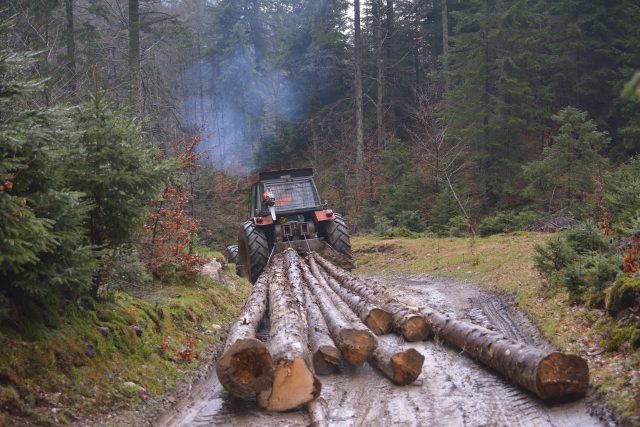
A slew of so-called “wildfire risk reduction” logging projects are proposed for tens of millions of acres of public forests across the Western U.S. — 3.5 million acres in the Front Range alone — with several already completed or underway in Boulder and Jefferson counties.
The 2021 federal infrastructure bill allotted more than $3 billion to the supposed goal of “reducing exposure of people, communities, and natural resources to the risk of catastrophic wildfire,” with Colorado Rep. Joe Neguse and Sens. Michael Bennet and John Hickenlooper seeking another $60 billion. Coupled with a federal emergency action that expedites the removal of so-called “hazardous fuels” (aka trees) while skirting certain legal objections, our public forests are seeing more logging than they have in decades.
Before we move things any further down the road, is it not worth a look at some independent, non-agency funded science?
You’ve likely heard the claim that decades of fire suppression has led to “overgrown” and “unhealthy” forests that threaten those of us living in the wildland-urban interface — it’s a narrative upheld by the forest products and biomass energy industries, federal, state, county and municipal government agencies, and elected officials on both sides of the aisle.
It’s true that, over the last three years, Colorado experienced three of its largest and most costly wildfires in a century (each human-caused). But if we go back to early 20th and 19th century records prior to fire suppression, we find that dense forests and severe wildfires were the norm.
An April 2023 study in the peer-reviewed journal Fire found that “abundant independent sources … in more than half of the 11 Western states [including Colorado] agreed that historical dry forests were highly variable in tree density and included a substantial area of dense forests.”
A 2014 study in PLoS One concluded that, across 54 sampled sites in local Front Range forests, “81% showed mixed- and high-severity fire effects … prior to fire suppression,” while above 6,000 feet “fire severities prior to any fire exclusion effects was sufficient to kill high percentages of mature trees.”
But that doesn’t change the fact that wildfires are burning near communities built at the forest’s edge. So, don’t we still need to cut trees?
Except, in a 2020 letter to Congress, 200 of the nation’s scientists wrote, “Reduced forest protections and increased logging tend to make wildland fires burn more intensely.” Or, as a 2016 study in Ecosphere put it: “Forests with the highest levels of protection from logging tend to burn least severely.”
Some might object that “fire risk reduction” isn’t about logging but “thinning.” Of course, that euphemism is used to justify clearcutting and logging mature and even old-growth trees up to 129-years-old, including right now in Jefferson and Boulder counties. What’s more, in cases when it truly is “thinning,” studies find even these “treatments” ineffective at stopping the spread of wildfire.
For instance, a study in Forest Ecology and Management referencing the 2002 Hayman Fire north of Colorado Springs — the largest in almost a century prior to 2020 — found that “fuel breaks and treatments were breached by massive spotting and intense surface fires” and that “suppression efforts had little benefit from fuel modifications.” A Forest Service study discovered that, during 2010’s Fourmile Canyon Fire outside Boulder, thinned forests “burned more severely than neighboring areas where the fuels were not treated.”
A 2021 study in Ecological Applications sums up the reason why, concluding that thinning “can lead to increased surface wind speed and fuel heating, which allows for increased rates of fire spread in thinned forests.” Even thinning followed by prescribed burns “may increase the risk of fire by increasing sunlight exposure to the forest floor, drying vegetation, promoting understory growth, and increasing wind speeds.” And that’s on top of the climate-driven heat and drought already triggering the big fires.
Not to mention the ecological impacts, such as releasing stores of carbon into the atmosphere massive enough to negate U.S. emissions targets, destroying wildlife habitat — including that of species listed as “threatened” under the Endangered Species Act — and contributing to widespread soil compaction and erosion.
For instance, the Antelope Park Forest Health Project is 3,000 acres of logging in the protected Button Rock Preserve west of Lyons in Boulder County. Photos taken on June 7 prove that freshly cut logging roads are currently dumping sediment into a stream flowing directly into the drinking water supply for Longmont. CDPHE’s Water Quality Control Division is currently investigating the complaint. (Photos can be found here).
It turns out the Forest Service has actually known how to protect us from wildfire for decades. Indeed, its Rocky Mountain Research Station’s Fire Sciences Laboratory found that measures such as metal roofs and maintaining defensible space immediately around a structure — recent studies find 15-60 feet to be most effective — can save up to 95% of homes from the most “catastrophic” wildfires.
Then why have so few homes actually been hardened? Because nearly all the taxpayer funding — and attention — is focused on scientifically debunked “wildfire risk reduction” logging in our public forests.
Josh Schlossberg is an award-winning science writer and sometimes organizer hiding out along the Front Range.
This opinion does not necessarily reflect the views of Boulder Weekly.














